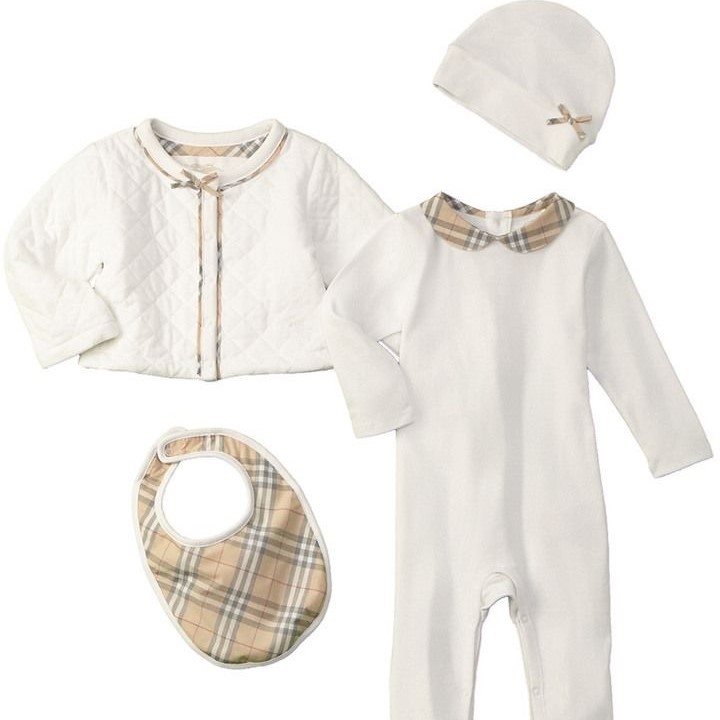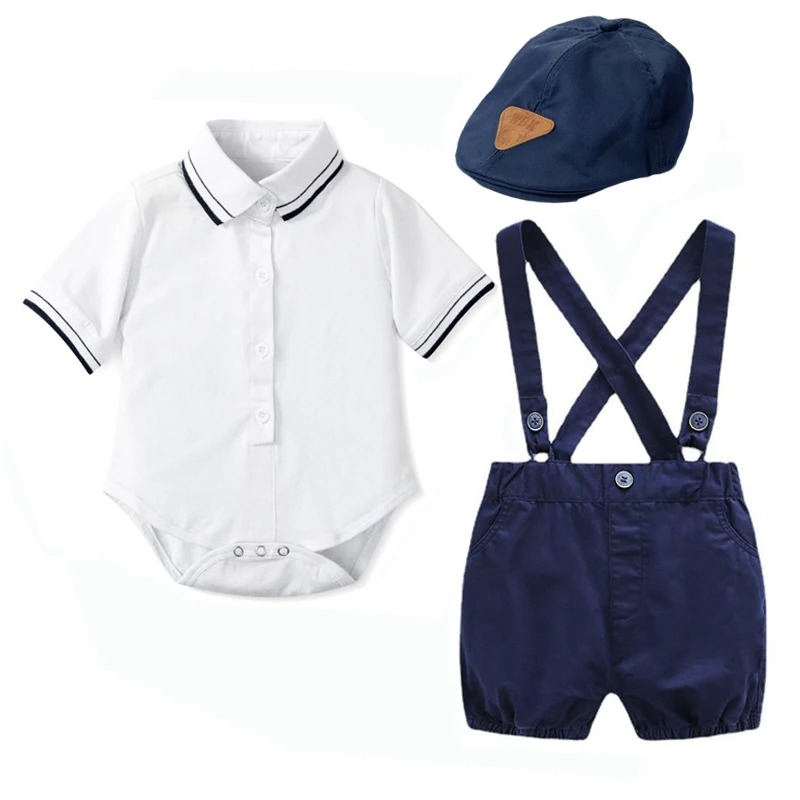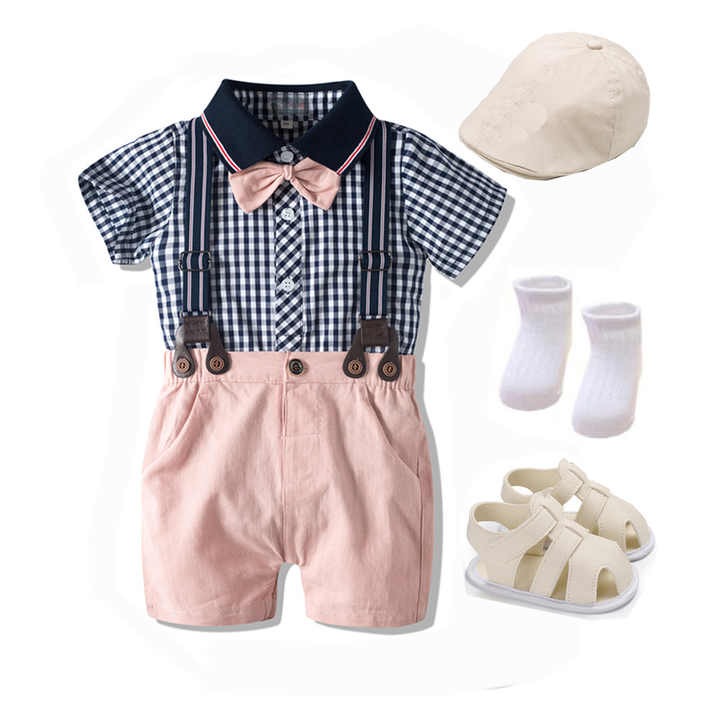The Evolution of Designer Baby Clothing
The landscape of designer baby clothing has seen dramatic shifts over recent years. Early on, these garments were once a luxury for the few, with high-priced tags and limited availability. Now, we experience a broader market where designer pieces are becoming increasingly accessible to many families. The shift towards inclusivity has pushed prominent brands to extend their reach, offering exclusive designs in miniature forms for the youngest fashion enthusiasts.
In the past decade, the materials and aesthetics of designer baby clothing have also evolved. Organic and high-quality fabrics are now the norm, meeting the demands of environmentally conscious parents. Bold patterns and colors that were once considered too “grown-up” are making their way into the baby fashion scene, reflecting a change in parental preferences. The digital era has further influenced this evolution, with online boutiques and social media platforms heralding the rise of indie designers and niche trends.
The synergy between fashion and function has never been clearer than in today’s designer baby clothing. Clothes that are both stylish and practical—easy to put on and comfortable for baby’s movement—are now in vogue. Due to this, the evolution continues as brands innovate to blend aesthetic appeal with the developmental needs of infants and toddlers.
What stands out most in the 2025 designer baby clothing trend is the seamless harmony between style and child-friendly design. Gone are the days of restrictive and ornate baby garments; we are now in an era where each piece embodies fashion-forward thinking without forsaking the comfort of our little ones. As we look back, it’s evident how far we’ve come—and the exciting possibilities for the future of mini couture.
Key Features of 2025’s Designer Baby Apparel
When exploring the horizon of 2025’s designer baby clothing, certain key features stand out. Textures, colors, and cutting-edge designs now meet in a vibrant mix that challenges conventional baby wear. Here, we look at the hallmark traits characterizing these stylish outfits.
- Innovative Materials: Parents today favor clothes that offer comfort while being durable. Current trends include garments made from bamboo, modal, and high-tech synthetic blends. These fabrics provide softness and ease of care, ideal for a baby’s sensitive skin.
- Mix-and-Match Potential: The ability to create multiple outfits from a few versatile pieces is highly valued in 2025. Designer baby clothes now often come with mix-and-match capabilities, enabling parents to fashion numerous looks.
- Modern Aesthetics: Gone are the days of pastels being the only color option for infants. Today’s designer baby clothing features a wide range of hues, from bold to neutral, reflecting a contemporary palette.
- Interactive Elements: Clothing with sensory elements like different textures and fun sounds are becoming popular. They not only entertain babies but also support their sensory development.
- Customizable Options: Personalization is in vogue. Names, initials, or custom graphics—today’s designer baby wear can reflect a child’s individuality right from the outset.
- Eco-conscious Efforts: Environmental impact is on everyone’s mind, and baby clothing designers are responding. Many brands now offer clothes that are not just recyclable, but also crafted from upcycled materials.
These standout features of 2025’s designer baby apparel blend functionality with fashion, echoing the desires of modern parents who look for the best in both worlds.
Popular Brands and Designers in Baby Fashion

The world of designer baby clothing is rich with variety, thanks to the creativity of numerous brands and designers. Each brings a unique flair to the market, setting trends that resonated with modern parents in 2025. Here are some notable names making waves in the baby fashion scene:
- Luxury Icons: Prestigious fashion houses have extended their lines to include baby wear. Their collections feature miniature versions of their iconic designs, complete with the luxury and craftsmanship they’re known for.
- Indie Labels: Smaller, independent labels have gained popularity through social media and online marketplaces. They offer fresh, imaginative designs that stand out from the mass-produced offerings.
- Eco-conscious Designers: A new breed of fashion creators focuses on sustainability. They use organic and upcycled materials, ensuring that style comes with a smaller environmental footprint.
- Tech-Savvy Startups: Innovation-driven brands fuse technology with design, creating smart garments that are both stylish and functional. Features like easy-snap buttons or adjustable sizes make dressing up a baby simpler than ever.
- Personalization Pioneers: Those who offer customizable options tap into the desire for individuality, allowing parents to add a personal touch to their baby’s wardrobe. Names and unique designs adorn these custom pieces.
This diverse landscape of brands and designers ensures that parents have a multitude of choices when it comes to dressing their little ones in the latest trends. The growth of designer baby clothing is supported not only by household names but also by the visionary work of up-and-coming talents who understand the evolving needs and ethics of the modern family.
Sustainable and Eco-Friendly Baby Clothes Trends
As we witness a growing concern for the planet, sustainable trends in designer baby clothing are gaining momentum in 2025. Eco-friendly practices are no longer a niche, but a widespread priority among both established and upcoming fashion brands. Here’s how sustainability is being embraced in the infant fashion industry:
- Organic Fabrics: More brands are shifting towards using 100% organic cotton, bamboo, and wool. These materials are gentle on baby’s skin and kind to the earth.
- Recycling and Upcycling: Old garments are getting a second life. Many designer baby clothing lines include items made from recycled or upcycled fabrics, reducing waste.
- Biodegradable Options: Designers are innovating with biodegradable materials that can break down naturally, lessening the environmental burden.
- Local Production: To cut down on carbon emissions from transport, some brands are focusing on local production and sourcing of materials.
- Minimalist Design: A philosophy of ‘less is more’ reduces environmental impact. Simple, versatile pieces that last longer help minimize the carbon footprint.
- Chemical-Free Dyes: There’s a move away from harsh chemical dyes to natural and non-toxic options, which are safer for babies and the environment.
These sustainable trends in designer baby clothing not only focus on the health and comfort of the little ones but also ensure a cleaner world for their future. Parents in 2025 are consciously choosing brands that align with these values, driving the fashion industry towards a greener path.
The Impact of Technology on Baby Clothing Design

Technology has revolutionized designer baby clothing, creating smart, interactive garments. The current year, 2025, sees a surge in the use of technological advancements to enhance the design and functionality of baby apparel. Below, we explore the different ways technology is shaping this industry:
- Smart Fabrics: Innovative materials that adapt to temperature changes or monitor a baby’s vital signs are increasingly featured in designer garments.
- 3D Printing: Customization reaches new heights with 3D printing, allowing parents to design unique pieces for their babies that are also comfortable and safe.
- Wearable Technology: Integrating wearable tech into baby clothes, such as soft sensors that track sleep patterns, supports parents in their caregiving.
- Easy-Snap Features: Magnetic snaps and other easy-fastening solutions are making it quicker and less fussy to dress babies, a welcomed convenience for parents.
- Interactive Elements: Augmented reality (AR) and sound-chip technology are being incorporated into clothing, providing educational and entertaining experiences for babies.
- Online Customization Tools: Brands are offering online platforms where parents can tailor baby apparel, choosing colors, patterns, and personalized details.
As technology continues to merge with baby fashion, we can expect even more innovative and functional designs to emerge. These tech-savvy advancements prioritize the ease of parenting while ensuring that little ones are dressed in the latest, most cutting-edge styles in designer baby clothing.
Gender-Neutral Designs in 2025 Baby Wardrobe
The year 2025 sees a marked rise in gender-neutral designer baby clothing. Parental demand is driving this trend. Families now seek apparel that breaks away from traditional pink and blue norms. ‘Neutral’ does not mean plain – the offerings are diverse and stylish.
Key points of this trend include:
- Broad Color Palette: Earth tones, vibrant yellows, and greens dominate. The idea is to move past gender-specific hues. All babies can look good in a variety of shades.
- Versatile Patterns: Polka dots, stripes, and geometric shapes are in. These designs do not box kids into gendered styles. They are perfect for any baby’s wardrobe.
- Inclusive Marketing: Brands promote these designs to all parents. Campaigns show boys and girls alike in the same outfits. This highlights how clothes fit any child, regardless of gender.
- Reusable Across Siblings: Parents can pass down clothes to younger siblings with ease. Gender-neutral clothes offer better longevity. They make hand-me-downs more convenient.
- Empowerment Message: This trend sends a strong message about individuality. It suggests clothing does not define a child’s identity. Rather, it encourages self-expression from a young age.
The shift toward gender-neutral items reflects a broader societal change. People are rethinking how we define and express gender. Designer baby clothing is leading the way, with fashion-forward yet practical options for the new generation. In 2025, the beauty of these designs lies in their universal appeal. They suit any child and are free from gender constraints, making them a top choice for modern families.
Safety and Comfort: Top Priorities in Baby Clothes

In the world of designer baby clothing, safety and comfort reign supreme in 2025. Brands understand that, while style is important, apparels must foremost be secure and comfy for the little ones. Here’s how current trends focus on these crucial aspects:
- Soft, Safe Fabrics: Clothing is made with ultra-soft materials, free of harsh chemicals and rough textures, ensuring a gentle touch on a baby’s delicate skin.
- Secure Fastenings: Safety is key in fastening devices. Magnetic snaps and smooth zippers replace buttons, minimizing the risk of choking hazards.
- Breathable Wear: Airy fabrics dominate to keep babies cool and rash-free. Designers select materials that provide ample ventilation.
- Flexible Fit: Garments feature stretchable fibers and adjustable bands. These allow for growth and movement, catering to active babies.
- Tested for Safety: Increased safety standards mean that clothing undergoes rigorous testing. This guarantees that each item is safe for wear.
- Ample Coverage: Protection from the elements is essential. Clothes offer suitable coverage, shielding babies from sun and cold while remaining fashionable.
In essence, designer baby clothing in 2025 balances chic with security and snugness. Parents can dress their babies in trendy outfits without compromising their well-being or comfort.
Where to Shop for Trendy Designer Baby Wear
When searching for fashionable designer baby clothing in 2025, many retail options cater to style-savvy parents. The best shopping destinations blend quality, variety, and convenience. Here’s where you can find the latest baby apparel that’s both chic and practical.
- Boutique Online Stores: These shops offer unique collections from various premium brands. They often showcase exclusive items not found in larger retail chains.
- Luxury Brand Websites: Renowned fashion houses provide their full lines of baby wear online. Parents can buy directly from the source for authentic luxury garments.
- Eco-Friendly Platforms: For those committed to sustainability, dedicated websites focus on green baby apparel. They feature organic, upcycled, and ethically-made pieces.
- Social Media Marketplaces: Instagram and Facebook have become hubs for indie labels. Innovative startups use these platforms to sell directly to consumers.
- Personalization Services: Some online services specialize in custom-made baby clothes. They allow for personalized details like names or unique color combinations.
- Local Baby Boutiques: Shopping locally can bring a personal touch. Boutique owners often curate a selection that reflects the latest trends and supports local designers.
These shopping avenues, offering a mix of traditional and cutting-edge options, ensure that parents have access to the best in designer baby clothing. Quality, style, and individual expression come together in these retail choices, making it easy for every family to dress their little ones in the latest fashions.



